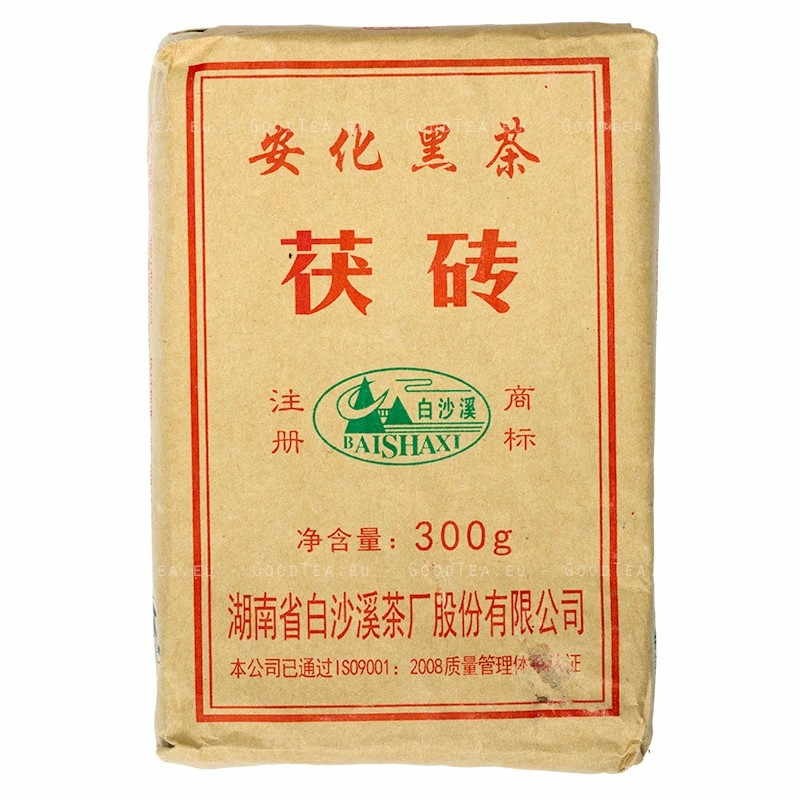- -18%







(€177.67 kg)

Delivery policy
In the Chinese province of Hunan, we can find several interesting teas, but perhaps the most interesting and well-known is Fu Cha or Fu Zhuan, which we classify as Hei Cha teas and which is typically found in the form of a pressed brick. The tea is sometimes called Golden Flower Tea due to the presence of the noble mold Eurotium Cristatus, which resembles small yellow flowers and is spread over the entire volume of the brick. Tea resonates strongly with the element of Earth (Wu Xing) and has been a favorite among Korean monks for centuries. Tibetans and Mongols have always used it as a remedy for stomach ache. The first Fu Zhuan was produced as early as 1368 at the beginning of the Ming Dynasty and was never missing among the goods transported along the Silk Road. Bai Sha Xi Tea Factory in Anhua County of Hunan is the earliest "new-era" producer of "Dark Tea" (hei cha) in Hunan and the first to produce the Golden Flower bricks in China. Bai Sha Xi was established in 1940 to product Hei Cha bricks, then in 1953 they produced the first Fu Brick with Golden Flowers.
This 300 g tea brick is composed entirely of spring harvest material from An Hua county area mountainous tea gardens. The tea was fermented using Bai Sha Xi's proprietary process, then pressed into bricks where the golden flowers flourish in the inner section of the brick where the conditions are just right to support them. After a few days the Golden Flowers have thrived the bricks are dried gradually using a temperature of 37 °C which preserves gradually halts the spread of the flowers without damaging them or the tea leaves.
Fu in Chinese means the hottest part of summer, which is the tea harvest season for Fu Cha. The leaves are collected during the hottest days of summer, which has a major impact on the properties of the resulting tea. Leaves harvested in summer are large and strong and contain more fluorine and catechins than spring leaves. Thanks to this, the resulting tea should taste significantly bitter, but this is not the case, as the bitter taste is eliminated during the fermentation process (purchasing the leaves similar to Pu Er tea). Tea leaves traditionally come not only from Hunan province, but also from Shaanxi and Sichuan provinces. From the point of view of Chinese medicine, Fu Cha is extremely beneficial for the human digestive tract. It slightly warms the body, which is beneficial for digestion, but the main harmonizing function is performed by the probiotic bacteria Eurotium Cristatus, which work similarly to probiotics in other foods (e.g. some yogurts).
Recently, Japanese scientists have devoted a lot of time to the study of probiotic cultures in tea, and the results only confirm the already known fact that Fu Cha and Puer teas strongly support the burning of unhealthy fats in the human body. According to their findings, Fu Cha also has a strong harmonizing effect on the entire human digestive tract.
Form brick (zhuan) 300 g
Country of origin China
Province Hunan
Location Anhua 安化